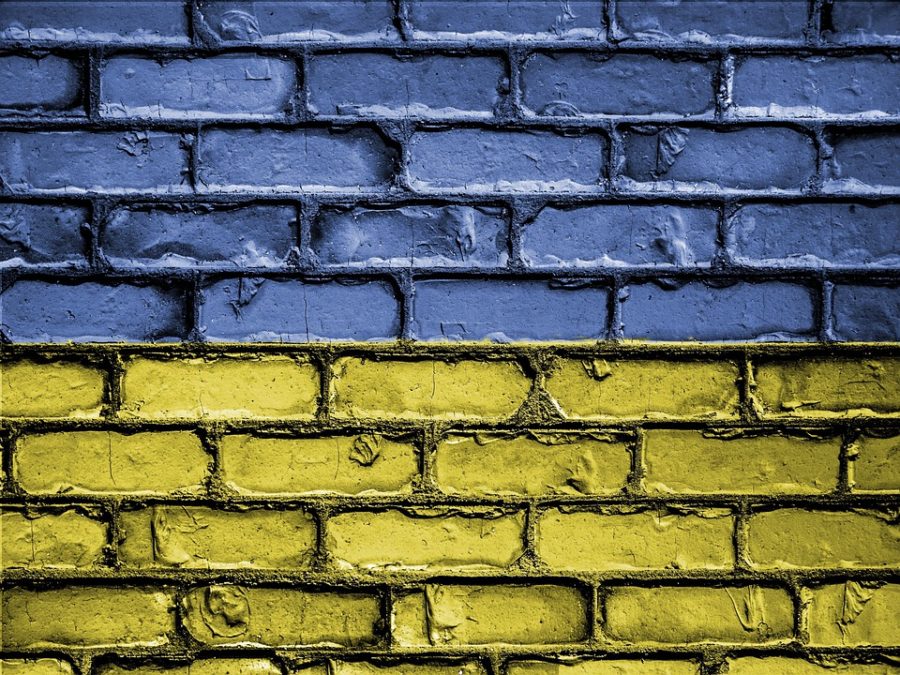Seven Months on, the War in Ukraine Still Rages
September 27, 2022
Since the invasion of Ukraine on February 24 of this year, Russian forces have been wreaking havoc on the country. Some 210 days later, much has happened. Missiles, rockets, and artillery shells routinely drop onto civilian-occupied areas. There are threats to nuclear power plants and the electrical grid. Then there are the thinly-veiled nuclear threats that Russia has made to the sovereign country of Ukraine.
Led by Vladimir Putin, who is effectively the authoritarian ruler of Russia, Russian soldiers have been under strict orders to seize the territory of Ukraine, mostly under the pretense that since it once belonged to Russia, it is still Russian land. With his ability to control the media narrative, Putin has kept his true intentions hidden from the public. Russians aren’t even permitted to call it a war. It is a “special military operation.”
However, even if Putin can control much of what his people see, he can’t control their minds, let alone world opinion. With social media being an important factor in the spreading of news, especially among younger citizens and those in urban areas, many Russian people know what is actually happening. Thousands of Russians have protesting the war in Ukraine, risking their lives to protest against a war that has ravaged the lives of millions. Unfortunately, even with pockets of brave people scattered around the country, Putin has been able to censor the news, declaring the country “united” on Russian state television.
There can be little doubt that Ukraine has defied all the odds against Russia. Based on the size of the two armies, their relative firepower, and the element of surprise, the beginning of the war seemed to favor Russia heavily. However, as the weeks and months passed, Ukraine held on, inflicted heavy losses on the enemy, and now, equipped with modern U.S. and European equipment, it has even gone on the offensive. Whether it be the iron will and indomitable hope of Ukraine’s citizens, the prudent defense that its military has mounted, or the inspirational words of President Volodymyr Zelenskyy, Ukraine has demonstrated that it will not be beaten. In the past seven months, Ukraine has not shown the faintest signs of surrendering to Putin’s wishes, only improving its outlook and its defenses. In its September counterattacks, for example, Ukraine retook as much as territory in a few days as Russia had managed to take in a few months. As the Washington Post reported, the Ukrainians liberated more than 20 towns in under 24 hours.
With the Ukrainian people retaking their own land and pushing Russian forces back in some sectors, Putin has had to make some difficult decisions. This week, Putin announced a partial mobilization. The news has widely reported that Putin has called up 300,000 reservists (supposedly those with previous military experience), but the actual order may involve more troops. Some sources speculate that Putin’s order, which contains secret provisions, may actually involve up to 1 million soldiers.
This mobilization involves what we in America would call the draft. Putin’s government will pick names from all eligible men in the country in order to fight in the war. Putin hopes to increase the size of his forces in Ukraine in order to push Ukrainian forces back or at least hold the territory that he has gained. The partial mobilization has not gone over well in the country. Multiple protests have broken out, resulting in many arrests, while even Russian state media has criticized the chaotic way that officials have handled the conscription process.
As this unfortunate war continues, Ukraine and its people continue to hold their heads high. They are willing to do anything to stop the Russian invasion. Even with Putin’s renewed threats of nuclear war, Ukraine and its allies stand strong. In these uncertain times, we must keep Ukraine in our thoughts and hope for the best.
